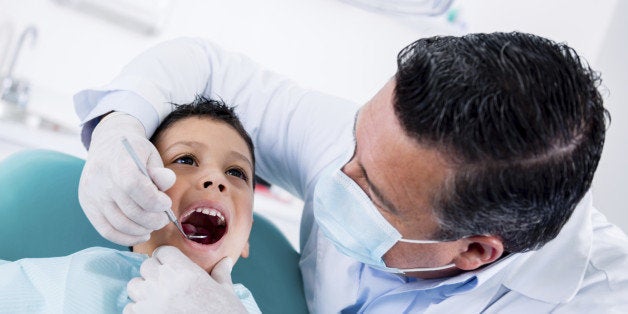
Dread going to the dentist? A new dental procedure out of the United Kingdom may make appointments a lot less anxiety-inducing by doing away with the drill.
Researchers at King's College London are working on a device for a tooth decay treatment that would fix cavities without the need for fillings and drilling. The two-step process, called Electrically Accelerated and Enhanced Remineralisation (EAER), involves an electric current that spurs decayed teeth to repair themselves.
"The way we treat teeth today is not ideal. When we repair a tooth by putting in a filling, that tooth enters a cycle of drilling and refilling as, ultimately, each 'repair' fails," professor Nigel Pitts of King's College London Dental Institute said in a statement. "Not only is our device kinder to the patient and better for their teeth, but it's expected to be at least as cost-effective as current dental treatments."
Instead of numbing an area with an injection, drilling down the decayed part of the tooth and inserting resin, the method accelerates the processes in the natural tooth cycle.
First, the damaged part of the outer layer of the tooth is prepared. Then, an electric current is used to incite minerals, such as calcium and phosphate, to reenter the tooth and repair it. The tiny, directed current is said to be smaller than the charges presently used for other dental procedures.
The procedure is similar to another noninvasive technique for teeth repair revealed in May. A team from the Harvard School of Engineering and Applied Sciences devised a method to use low-power light to trigger dental stem cells to repair teeth by forming the chief ingredient: dentin.
While the new technique is expected to treat tooth decay at various stages, the electric current will likely not work on cavities and decay that are too far gone.
"What it won't do is physically regrow a tooth," Pitts told BBC News.
Scotland-based company Reminova, an offshoot of the King’s College London Dental Innovation and Translation Centre, is currently seeking private investments to develop the device. It could be brought to market in less than three years.
